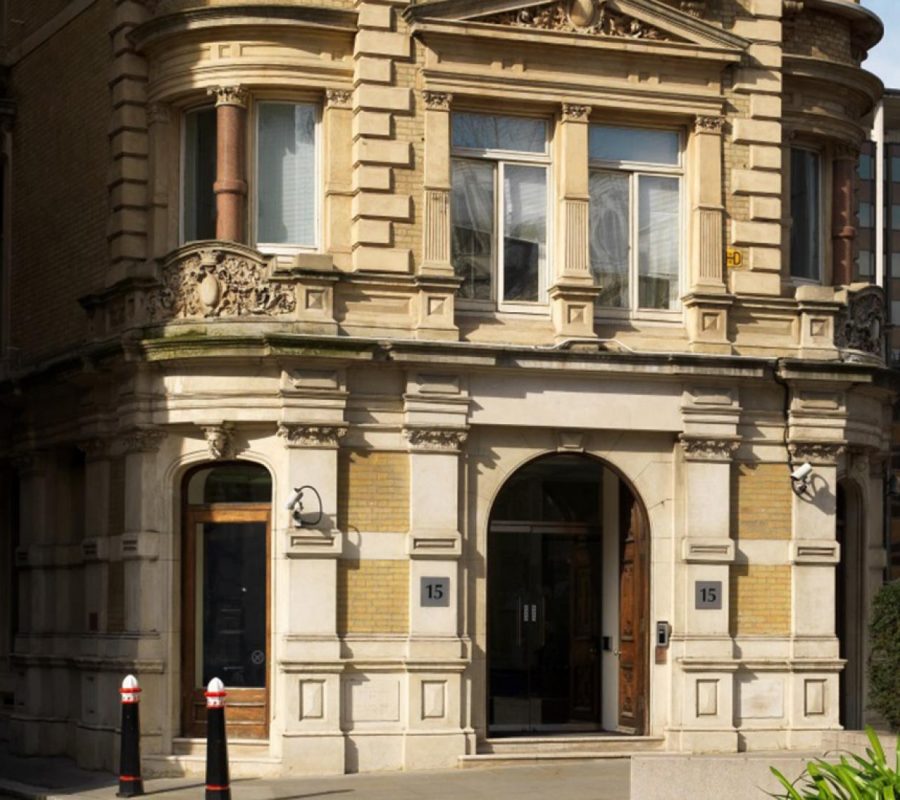Location:Paternoster Square
Paternoster Square Office Space
Office space in and near Paternoster Square stands in the shadow of the majestic St Paul’s Cathedral, the City of London’s original skyscraper.
The pedestrianised square is characterised by its colonnades, its tallest being the 75-foot (23-metre) tall Paternoster Square Column. This Corinthian column of Portland stone is topped by a gold-leaf-covered, flaming copper urn.
The square was the site of Newgate Market, named for the Roman western gate of Londinium and renamed after Paternoster Row in 1872.
It is just south of where the A40 officially starts, where St. Martin’s Le Grand meets Cheapside. The A40 is the major trunk road connecting London to Fishguard in Wales.
Buildings on Paternoster Row were destroyed by one of the heaviest night raids of The Blitz on the night of 29 December 1940 during the Second World War, and the area was rebuilt between 1961 and 1967.
In the late 1980s, many tenants relocated to other parts of the capital, leaving several premises around Paternoster Square vacant. That prompted landlords and the City of London to welcome proposals for the redevelopment of the area.
Permission was granted for a master plan in 1996, which was implemented by developers Mitsubishi Estate and Stanhope plc and completed in 2003. Among the first new tenants was the London Stock Exchange, which relocated from its former location on Old Broad Street in 2004.
The institution’s presence validated the location, and today it is home to other high-profile organisations, including Bank of America, Fidelity International, and Merrill Lynch International.
As of 2024, the London Stock Exchange was the most valuable in Europe, with a market value of over $3 trillion.
The Royal Exchange, founded by Sir Thomas Gresham in 1571, was where stockbrokers in London traded initially. However, during the 17th century, they were expelled due to their perceived rude manners.
They had to operate from nearby establishments, such as Jonathan’s Coffee House and Garraway’s Coffee House.
The activity evolved into a club of over 100 brokers, who opened a more formal ‘Stock Exchange’ in Sweeting’s Alley in the second half of the 18th century.
However, fraud was rife and a regulated exchange was later formed at Capel Court in 1801, where it remained for over a century.
In the late 1950s, stock market activity surged, prompting the new Stock Exchange Tower construction at 125 Old Broad Street. The 321-foot (98-metre) building, complete with its 23,000-square-foot (2,100-m2) trading floor, was opened by Queen Elizabeth II in 1972.
The FTSE 100 Index was launched in 1984 by a partnership between the Financial Times and the London Stock Exchange, and in 1986, the UK’s financial markets underwent sudden deregulation.
By 2000, the Stock Exchange Tower had become redundant due to deregulation and the replacement of trading floor activities by computerised systems.
In 2004, the London Stock Exchange moved to its brand-new headquarters at 10 Paternoster Square.
Today, the vibrant square is home to bars, pubs, restaurants and retailers.
It is the location of events such as its Oktoberfest and the annual 196-mile Tour de Pat, a static cycle ride equivalent to the distance to Paris, for charity.
Institutions and prestigious organisations representing the financial, legal, and other sectors continue to choose office space in and near Paternoster Square.
The office buildings in the locale offer first-class business accommodations with 5-star amenities in a highly sought-after location.
In addition to conventionally leased office space for rent, Paternoster Square and the surrounding areas within its EC4 district offer a growing range of flexible office space and workspace solutions that combine agility and efficiency.
Private serviced office suites, larger pre-fitted managed offices, and self-contained floors and buildings are on offer. These options are ready-furnished and provide ‘plug and play’ solutions managed on the occupier’s behalf.
The private offices offer secure, lockable suites that are fully furnished and equipped. Clients enjoy first-class communal amenities, including meeting rooms, breakout spaces, quiet zones, fitness and wellness facilities, cafes, and outdoor spaces.
Managed offices are ready-fitted, but the client can specify the fit-out and furnishings. Clients can opt to have private receptions, boardrooms, executive office suites, hot desking zones, kitchens, bathrooms, and shower facilities and create a tailored service level package.
These are paid for through a once-monthly all-inclusive rent that covers overheads such as utilities, cleaning, reception services, enterprise-grade internet services, and other items typically paid for and managed separately if renting an office via a conventional office lease.
As these office spaces are let by way of a licence, occupying clients have the freedom to efficiently modify their footprint by downsizing or upsizing in accordance with changing business requirements.
Many offices near Paternoster Square offer space requirements for 500 desks or more. Equally, clients can downsize into a smaller suite as business needs dictate.
The prime office buildings are designed and managed with an ESG consideration, appealing to those seeking space that aligns with their sustainable credentials while offering a wide range of amenities.
These buildings have end-of-trip amenities for self-powered commuters, including bicycle storage, showers, changing facilities, and EV chargers.
However, clients in the Paternoster Square area enjoy excellent public transport links from the City Thameslink station on Ludgate Hill and St Paul’s station.

